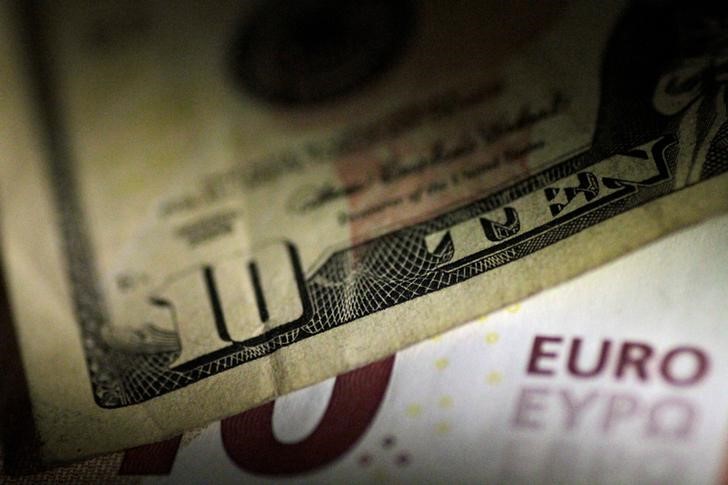Investing.com - The U.S. dollar was wallowing near 13-month lows against a basket of the other major currencies on Tuesday, while the euro pulled back from two-and-a-half year highs.
The U.S. dollar index, which measures the greenback’s strength against a trade-weighted basket of six major currencies, was up 0.15% to 92.81 by 11.00 a.m. ET (03.00 p.m. GMT) after falling as low as 92.64 on Monday, the weakest since May 2016.
The index fell 2.88% in July, its fifth straight monthly decline and its largest monthly percentage decline since March 2016.
Deepening political turmoil in Washington and diminished expectations for a third rate hike by the Federal Reserve this year have pressured the dollar lower.
The subdued inflation outlook has raised doubts over whether the Fed will be able to stick to its planned tightening path.
The dollar had been supported by the Fed's gradual policy tightening since late 2015 but the prospect that other major central banks may join it in tightening monetary policy has fed into recent dollar weakness.
Fading hopes for tax reforms and fiscal stimulus under the turbulent Trump administration have also weighed on the dollar.
Data on Tuesday showed that U.S. manufacturing growth slowed slightly in July, while consumer spending and inflation barely rose in June.
The ISM manufacturing index dipped to 56.3 in July from 57.8 in June, which was the highest since March 2002.
A separate report showed that U.S. consumer spending inched up just 0.1% in June, and the personal consumption expenditures (PCE) price index, excluding food and energy, also rose just 0.1% in June
The dollar was near one-and-a-half month lows against the yen, with USD/JPY at 110.14, near an overnight trough of 110.01.
The euro was lower, with EUR/USD down 0.32% to 1.1803, after touching a two-and-a-half year high of 1.1845 overnight.
Earlier in the day data showed that gross domestic product in the euro area rose 0.6% quarter-on-quarter in the three months to July and by 2.1% year-on-year, up from 1.9% in the first quarter.
Sterling was steady, with GBP/USD at 1.3224 after rising to a ten-month peak of 1.3244 earlier after data showing that UK factory growth rebounded in July on the back of a surge in new exports.
